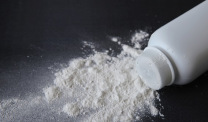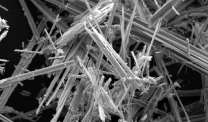Study Reveals Chemical Processes Triggered by Asbestos
Research & Clinical TrialsWritten by Michelle Whitmer | Edited By Walter Pacheco

As an established carcinogen, asbestos poses a number of serious health risks. While it is a prominent factor in asbestosis, one of the most aggressive illnesses associated with the mineral is pleural mesothelioma, a cancer that develops in the lining of the lungs. An Italian study led by Lorella Pascolo implemented synchrotron soft X-ray imaging and X-Ray Fluorescence (XRF) microscopy to examine the chemical makeup of the affected area. The study also revealed potential ways these chemicals could dictate the body’s reaction to foreign asbestos fibers.
While researchers have linked asbestos to malignant mesothelioma for quite some time, the exact way the fibers cause the cancer to develop remains unclear. The imaging techniques used in the study boast a higher probing depth than previously used techniques, revealing deeply-buried matter that optical or electron microscopes could not locate. This procedure provides a more comprehensive chemical analysis of fibers and the internal reaction mechanisms that occur once the fibers begin to damage lung tissue.
Medical professionals believe the body creates a casing around a lodged fiber to isolate the asbestos from the tissue, collectively called an “asbestos body” by scientists. This is presumed to be a protective mechanism. The experiment, which sought to differentiate between the fibers and the casing, measured the silicon, iron, oxygen and magnesium content in the samples. The fibers themselves tested high in silicon, while the coating had notably elevated magnesium, iron and oxygen content.
The tissue surrounding the asbestos body was also shown to have higher iron and magnesium levels than completely unaffected tissue. Researchers then inferred that iron may evoke oxidative stress that leads to cellular damage, while magnesium may trigger the formation of shells around the inhaled fibers.
The study additionally indicated the presence of these metals in asbestos fibers may be responsible for their carcinogenic nature. Crocidolite and amosite fibers — the two most carcinogenic forms of asbestos — contain up to 30 percent iron by weight. While not yet confirmed, it has been suggested that iron-rich proteins resulting from the lodged asbestos fiber could increase DNA damage that leads to cancerous mutations.
Researchers hope to use the results of this study to further clarify the role of chemical elements in the development of mesothelioma cancer. The XRF procedure and the information it yields is expected to advance cellular-level investigations of mesothelioma, while the new understandings of the body’s reaction to asbestos may lead to the eventual development of more effective treatments.






